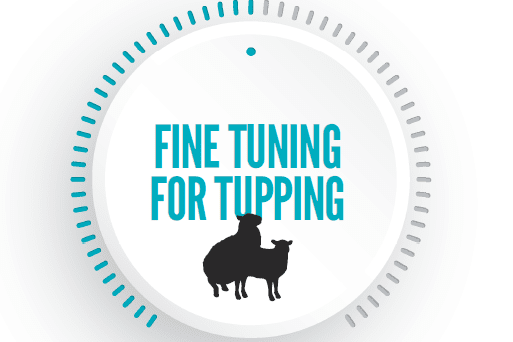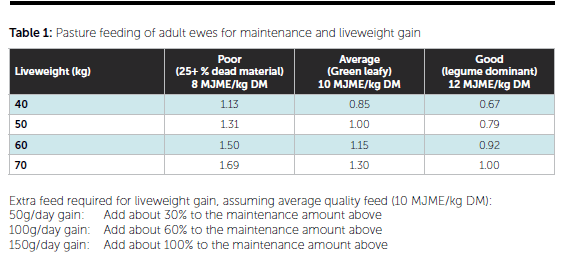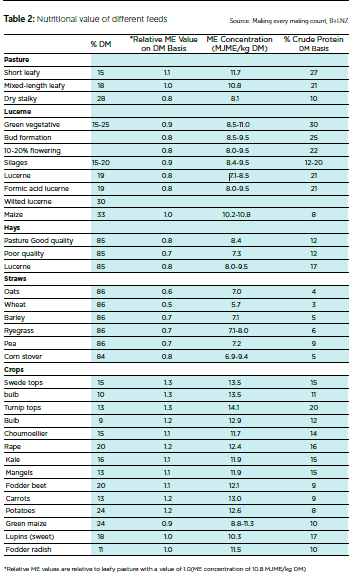Fine tuning for tupping
There are definite benefits in pushing lambing later than what is often the average for your region, writes Ken Geenty.

There are definite benefits in pushing lambing later than what is often the average for your region, writes Ken Geenty.
As the time comes for rams to go out for tupping it’s not too late to do some fine tuning. Included could be building on body condition score (BCS) to get a dynamic ovulation rate boost and some final thinking on lamb joining dates for a better lambing fit with seasonal feed supply.
A month or two pre-mating it’s probable most of you will have ewes up to BCS three on the 1-5 scale but inevitably there will be a tail end. One option is to run your hand over the ewes and draft out the lower end for preferential feeding. But importantly not at the expense of those remaining. At a good ewe growth rate of 150g/day it will take up to six weeks to put on 5-6kg liveweight or add one condition score.
Having ewes up to a good BCS level benefit ovulation rate and conception, particularly if feeding during tupping remains at just above maintenance. There is evidence that a rising level of feeding around mating can have a dynamic or ‘flushing’ effect with increased ovulation rate, particularly in lighter or lower BCS ewes.

In most cases a feeding boost around mating will be on pasture with levels required summarised in Table 1. Note that 60-70% more feed is required on poorer pastures compared with better quality legume dominant swards. Other options include feed supplements such as silage, good quality hay or cereal grains etc. summarized in Table 2. Cost-effectiveness in many cases may be questionable. If unsure, discuss with an informed colleague or adviser.
Allocation of pasture feed leading up to and during tupping obviously relies on supply. Average monthly pasture growth rates in New Zealand regions in B+LNZ’s ‘A guide to feed planning for sheep farmers’ indicates large yearly variation both between and within the various areas. Generally North Island spring growth kicks away in early August with pasture production jumping from 10-15 to 20-3kg DM/ha/day. In the South Island a similar jump normally happens about a month later in September.
With this in mind an important consideration going into the mating period is actual date of putting your rams out with the ewes. This date should not be set in concrete but reviewed each year. It’s expected that most of you probably stick to the average with others in your area. In this author’s experience in both NZ and Australia it is still very common for lambing to be earlier rather than later.
It’s my observation, and based on some early research, there are definite benefits in pushing lambing later than what is often the average for your region. Reasons being the importance of good ewe feeding at the other end both for lamb survival and milk yield in early lactation. A feed shortage later in lactation may be a worry but there are management options around weaning.

If pasture feed supply is tailing off before normal lamb weaning options include creep-grazing of lambs, earlier weaning and/or use of alternative feeds listed in Table 2. Again the cost-effectiveness of different feeding options needs to be examined. The main objectives being to maximize lamb growth and minimize ewe liveweight loss. Remembering the high feed cost of regaining ewe liveweight with some 1.5kg of good pasture drymatter saved for each kg lost but over 6kg later required to replace that kg of liveweight.
A good rule of thumb is that if quality pasture is limiting in late spring it should if possible be channeled through growing lambs rather than ewes. And remembering when lambs are weaned and ewes stop lactating their daily feed requirement pretty much halves.
Ram joining around mid-March is probably the most common North Island practice for lambing to start in mid-August. In the South Island later into April for a September lambing is more common.
As with all farming activities there are no set recipes due to the characteristic variation in weather and pasture supply. Your decisions on dates and practices will be based largely on experience and recommendations from others. But don’t be afraid to experiment a little, especially with timing, and you never know you may strike the jackpot!




